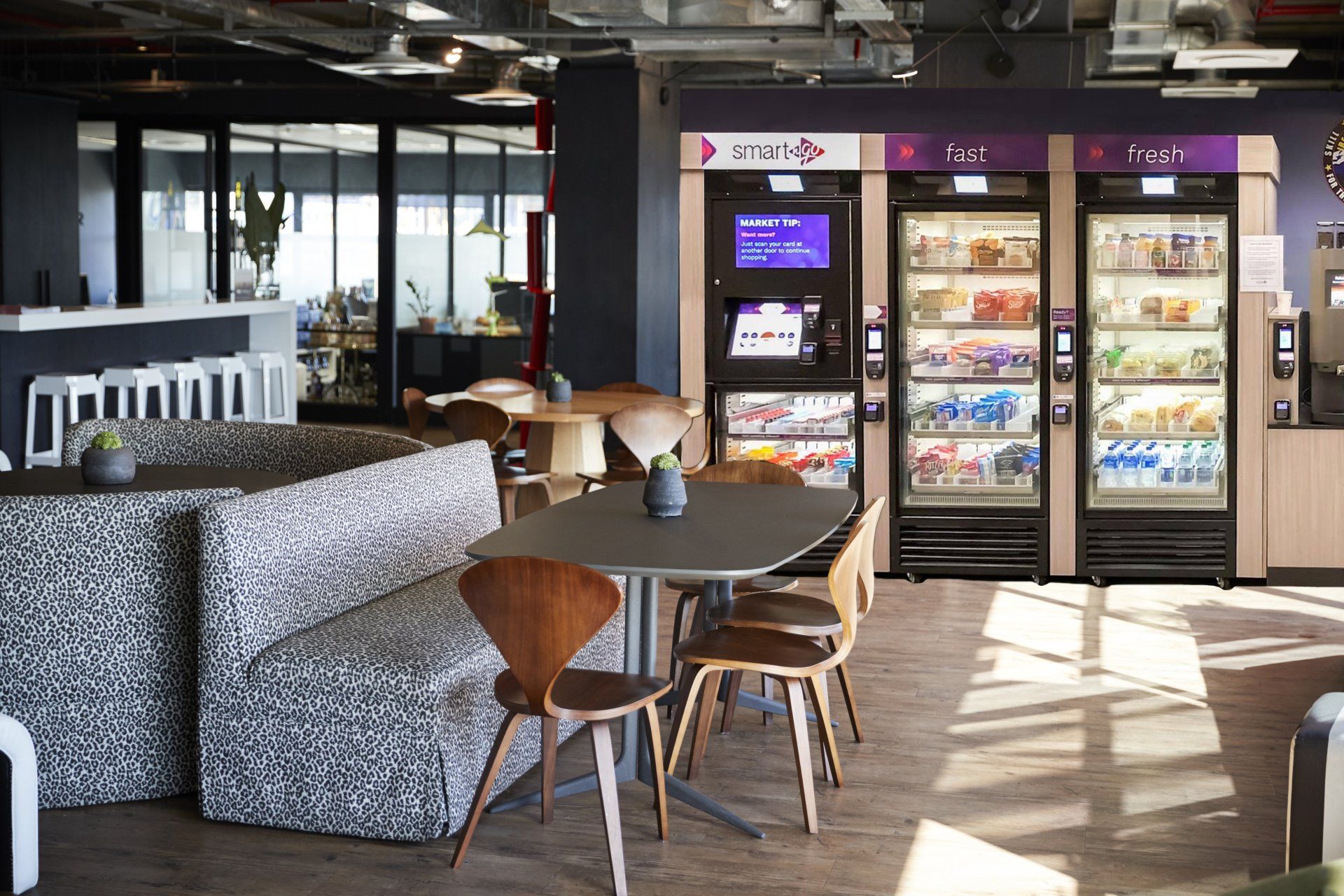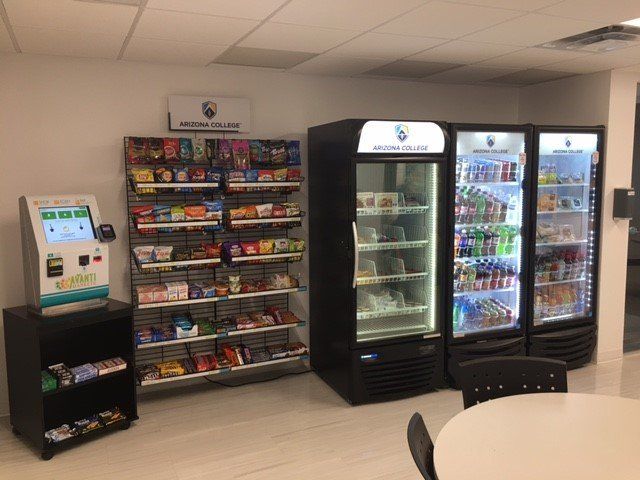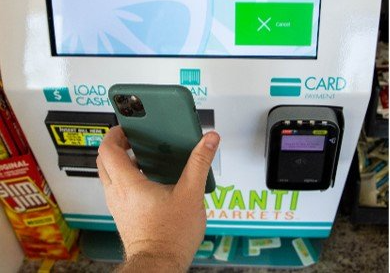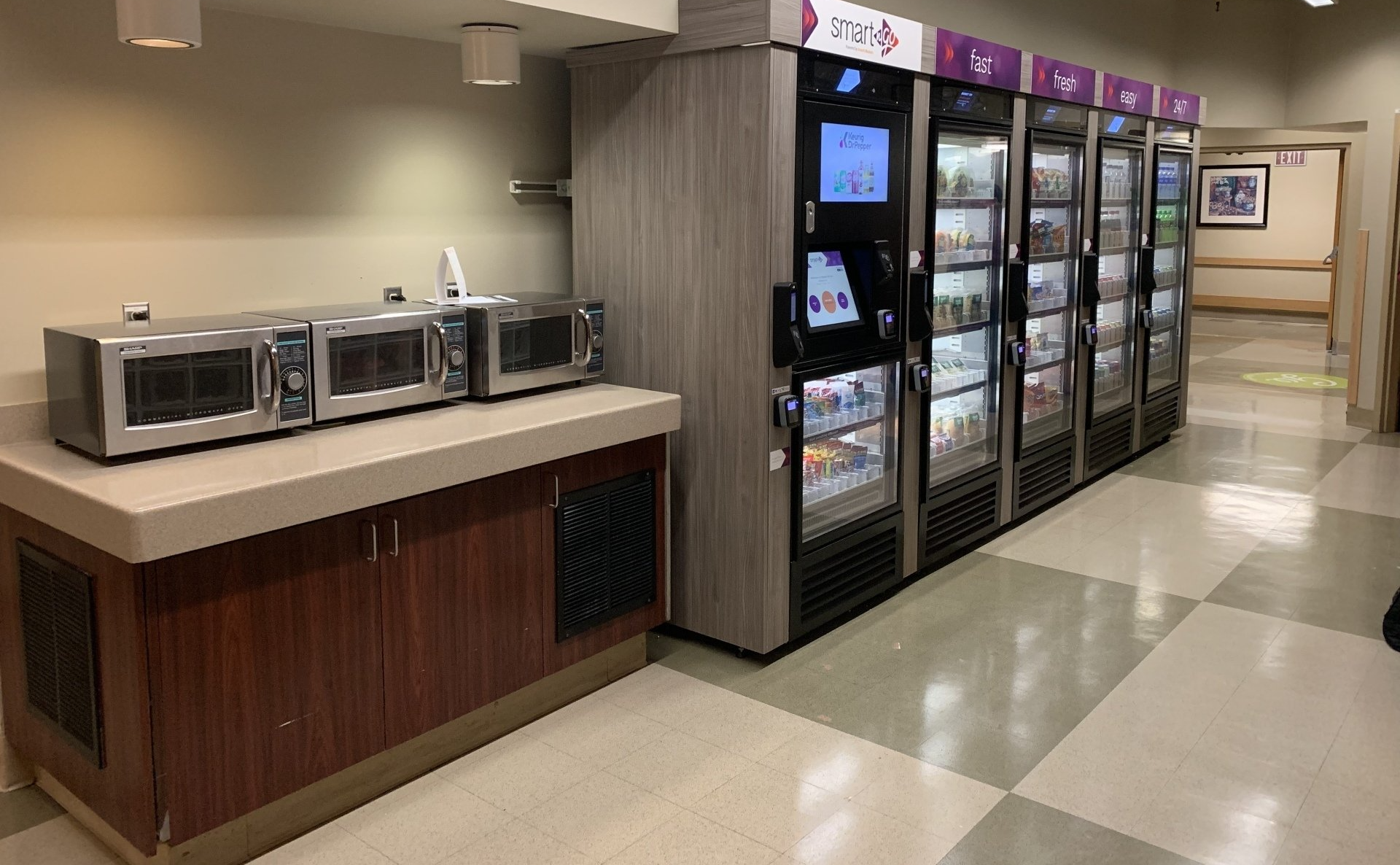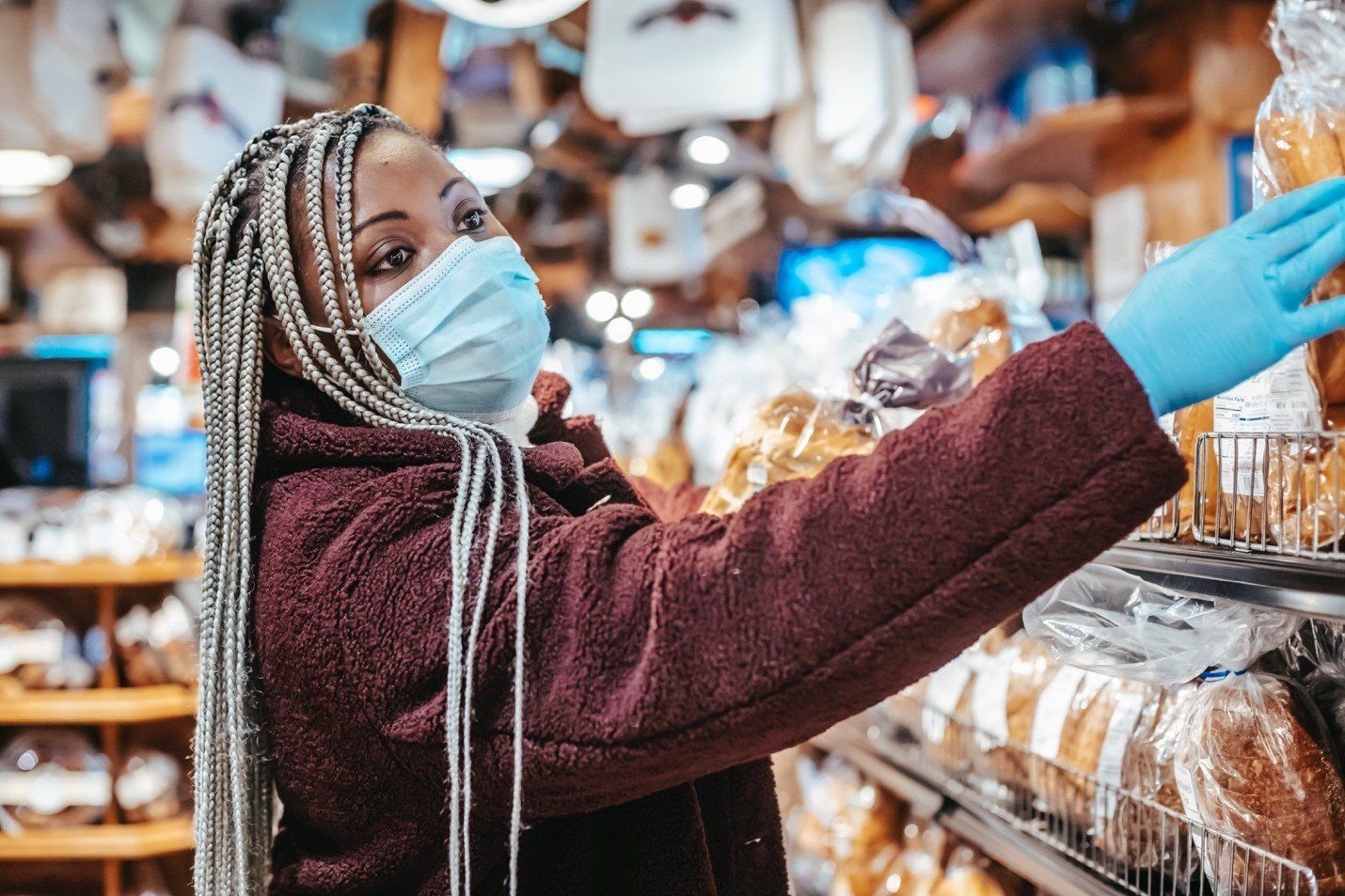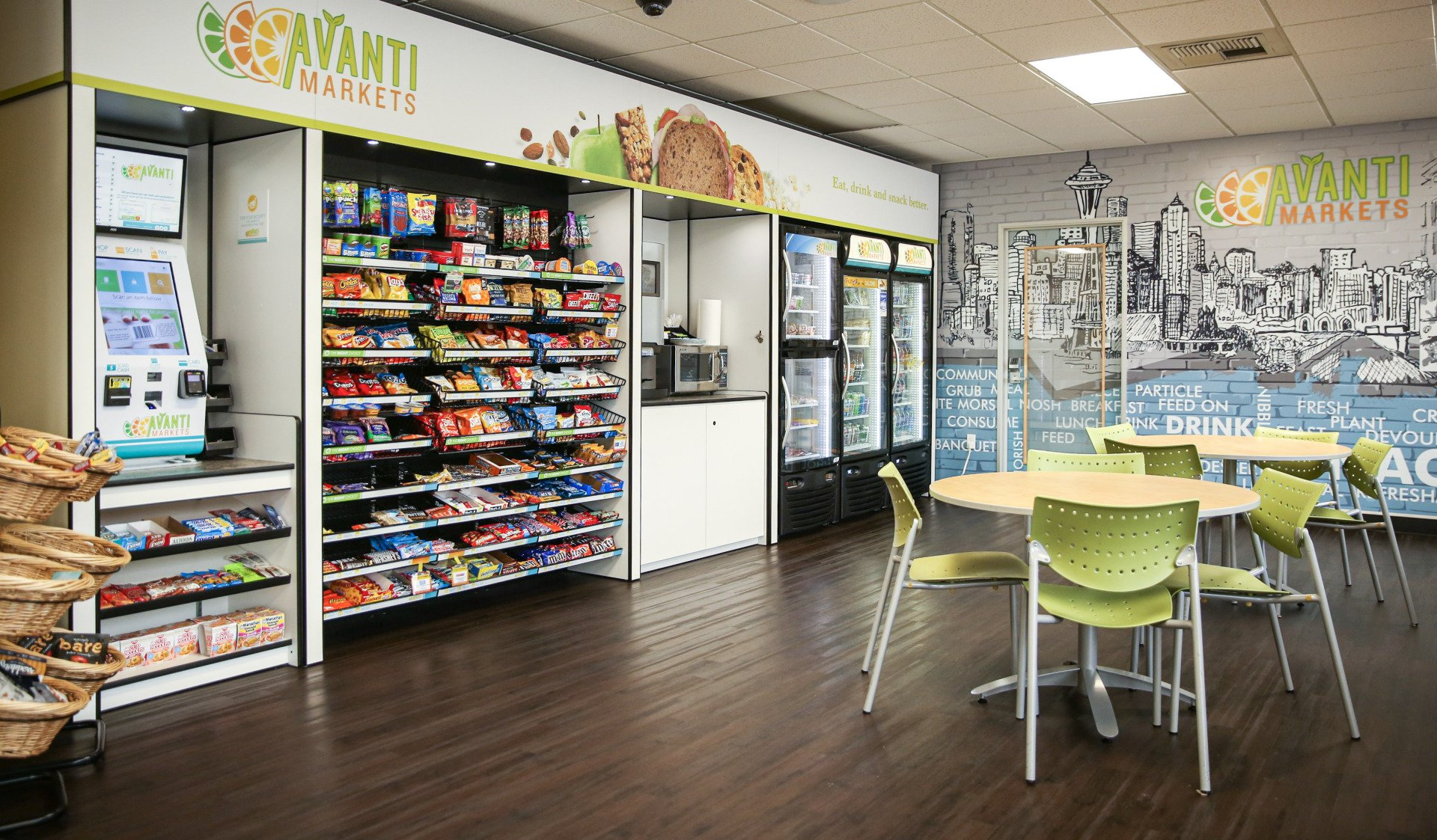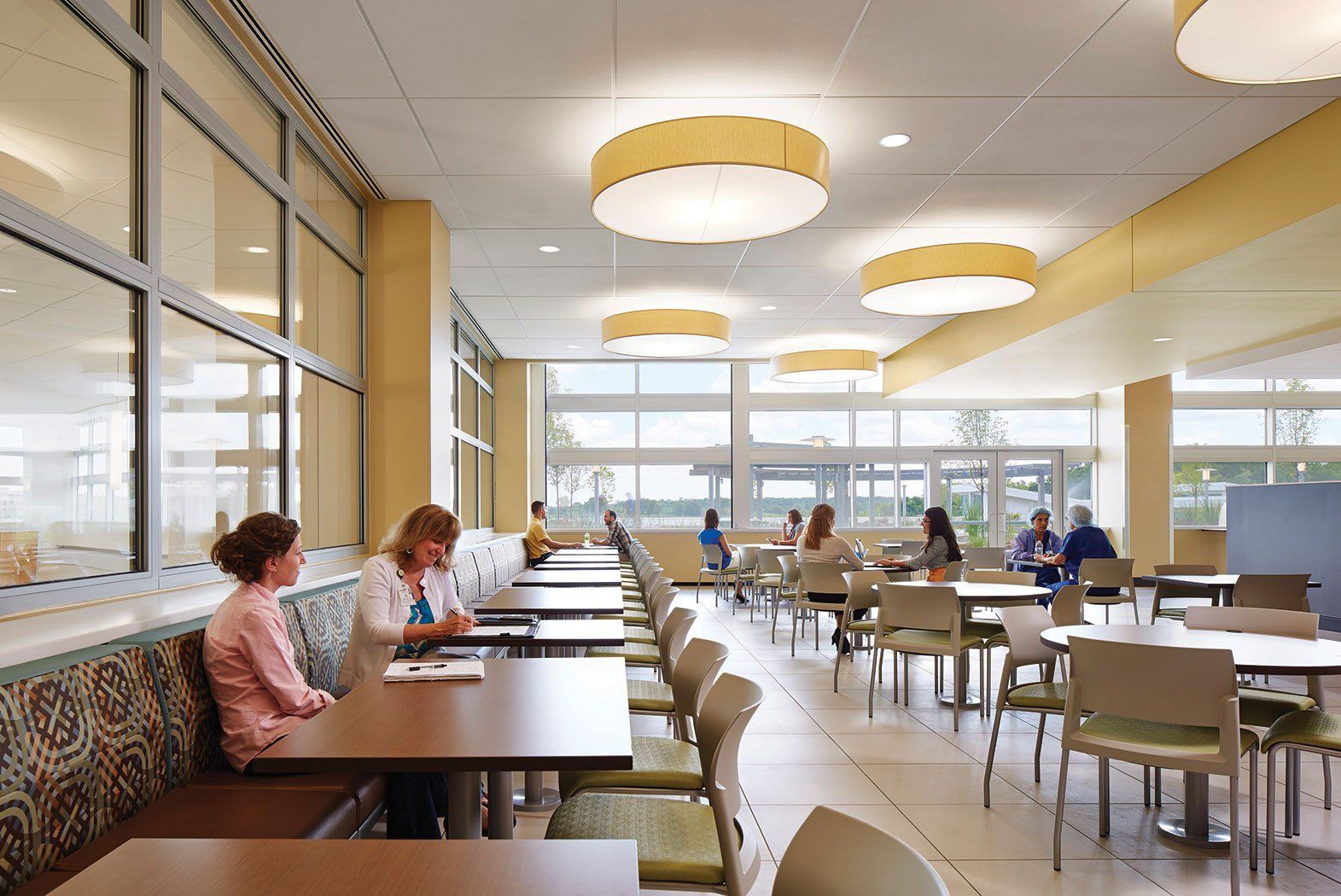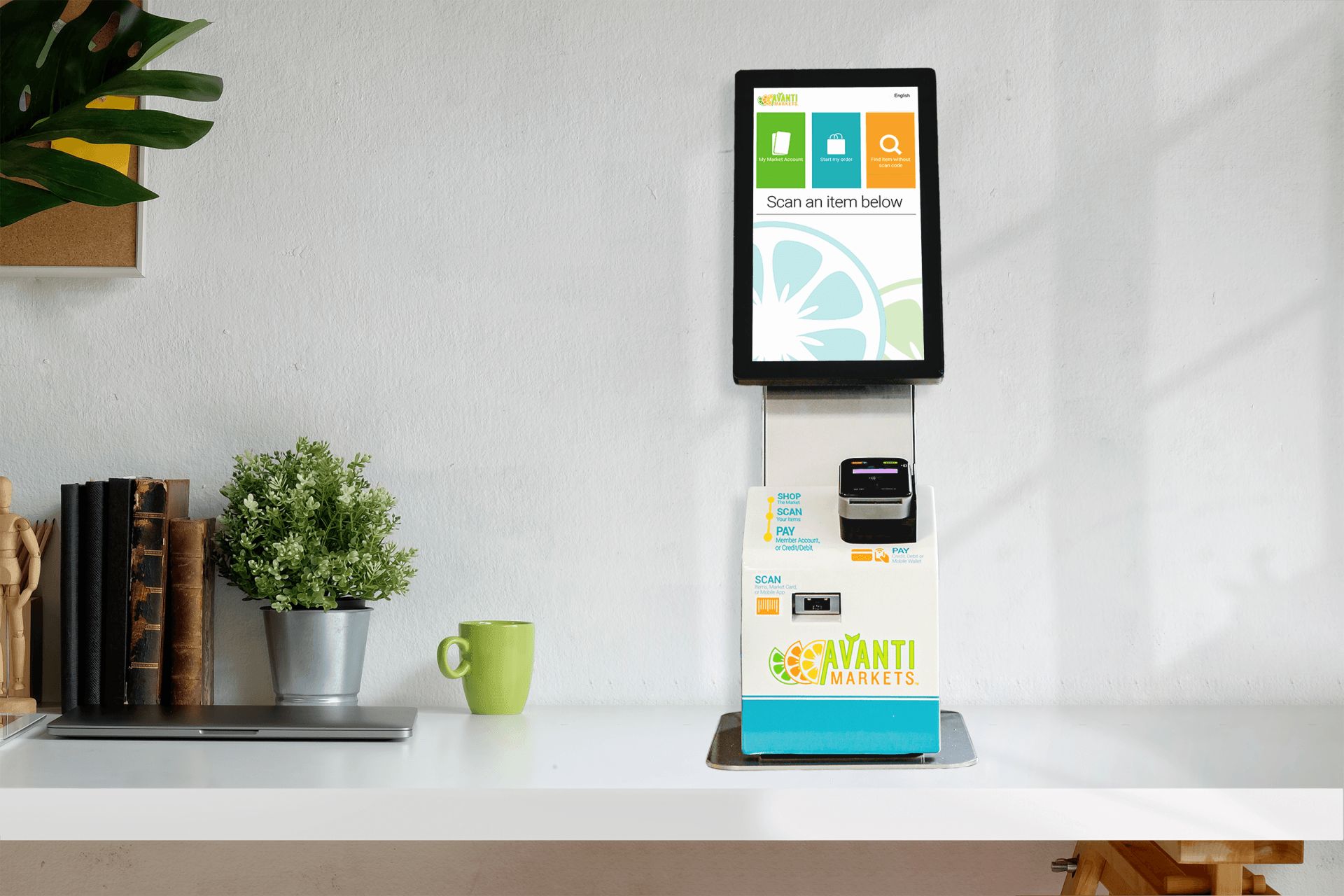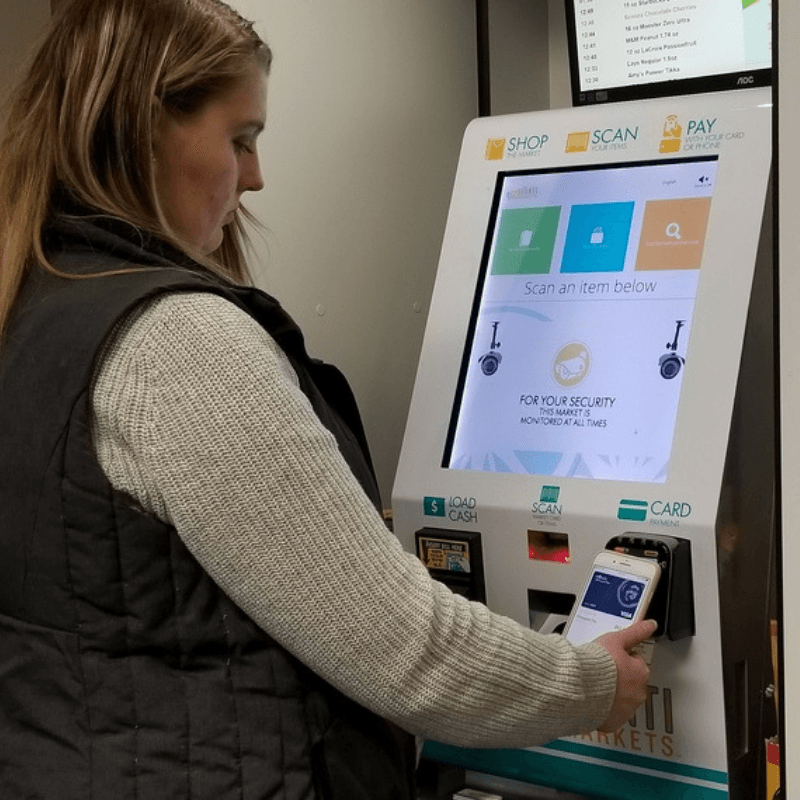September 29, 2023
3 Reasons to Make Food Available as a Perk at Work Using Micro Markets 1. Positive Impacts Even before the pandemic, a growing number of employers were tapping into the intrinsic value of making food available to employees in the workplace. A SHRM.org (Society of Human Resources Management) 2019 Employee Benefits Report notes that food and beverage amenities are available at a large and growing number of workplaces: 95% provide a break room or kitchenette 78% provide free coffee 13% offer subsidized or free cafeterias 31% even offer free snacks and beverages (up from 22 percent in 2015) Since the onset of the COVID-19 pandemic, employers are increasingly looking for ways to provide food and beverages for employees during the work day so they do not have to leave for meals or snacks. Not only do employees who leave and return represent increased potential for virus transmission, long waits, social distancing requirements, and other slowdowns at restaurants, coffee shops and fast food chains can negatively impact productivity and increase the amount of time employees are away from their office or workstation. Shift workers who only have 30 minutes for lunch may be hard-pressed to leave and return with food, let alone have time to consume it before returning to work. Additionally, for workers who have to arrive early or stay late, having food options available to them on-premises is vital. Dedicating space away from workstations where workers can obtain and consume food is also an important consideration. It is fundamentally important for employers to encourage employees to take regular breaks away from their desks and workstations, including snack breaks and lunch breaks with food and beverages. Even before COVID-19, 80 percent of workers said they normally ate lunch at their desk. White collar or salaried workers are even more likely to stay at their desk for lunch than their hourly and blue-collared counterparts. As quoted on NPR.org , " We know that creativity and innovation happen when people change their environment, and especially when they expose themselves to a nature-like environment, to a natural environment, " says Kimberly Elsbach, a professor at the University of California, Davis Graduate School of Management, who studies workplace psychology. " So staying inside, in the same (single) location, is really detrimental to creative thinking. It's also detrimental to doing that rumination that's needed for ideas to percolate and gestate and allow a person to arrive at an 'aha' moment .” Providing access to meals, snacks, and beverages throughout the day encourages employees to step away from their workspace and take not only mandated but beneficial breaks away from computers, stationary standing or sitting, and so on. If a variety of refreshments are readily available to employees on-site, they have more time to eat and more time to engage in beneficial activities, such as taking a walk around the block and getting fresh air during breaks or lunch. 2. Practical Efficiencies Very few employers have the space and financial resources to offer restaurant-like food service facilities complete with commercial kitchens, food workers, and large dining spaces. However, a large number of employers, even small operations, already have space set aside for breaks and lunchrooms where micro markets that provide workers with a wide variety of healthy, fresh, and even hot foods could be installed and operated. All you need is space, power, and internet connectivity! Avanti micro market and intelligent vending solutions are modular. Even a small break room could potentially house a significant variety of food options for employees. One of the benefits of choosing an Avanti micro market for your workplace is our expertise. We can show you a variety of options that might be appropriate for your space, and even help you implement more than one type of micro market solution (micro markets, smart vending, order-ahead with delivery, etc.) at your facility, giving your employees the most variety and convenience, including fully contactless food options. You may not want to the spend corporate resources needed to provide a robust food-at-work program for your employees. However, micro markets can be installed in your workplace at little or no cost. We have micro market operators who are ready to assist in the implementation and fully operate markets at your facility. They take on the responsibility and costs of employee food service at your facility, so you can stay focused on what is most important to your organization while still enjoying the positive impacts that come from making food readily available to your workers. 3. To Offset Disappearing Perks Whether due to financial or safety constraints as a result of the COVID-19 pandemic, many companies have found themselves in the position of needing to temporarily (or even permanently) eliminate a number employee perks, especially employee perks and workplace benefits that involve gatherings where social distancing cannot be maintained or use of shared equipment in the workplace. Even using a shared refrigerator to store food prepared at home could result in people touching the food containers and beverages of their co-workers. Eliminating perks can decimate employee morale and result in employee backlash and turnover. However, due to the realities of COVID-19, food service and dining at work must evolve . Employers can improve health and safety conditions in areas where employees consume (or obtain) food in the workplace by implementing new protocols and making transitions, such as: Cleaning surfaces (counters, tables, chairs) and equipment such as coffee makers, water fountains, water coolers, etc., more frequently and/or after each use Limiting the number of people handling food and beverage preparation or packaging Socializing in smaller groups to accommodate social distancing Not leaving food out in the open Transitioning from buffet style cafeterias or catered meals to packaged single-serve grab-and-go or pre-ordered items Using disposable, compostable, or recyclable single use serving dishes, plates, cutlery, stirrers, etc. Increasing use of low and no-touch equipment, such as changing from a multi-cup beverage carafe-style dispenser to a single-serve beverage dispenser Making hand sanitizer and sanitizing wipes available in for employees returning to work and at all common or shared use areas (break and lunch rooms, bathrooms, kitchens, etc.) Limit the number of people coming to the workplace to make deliveries of food and beverages (coordinate combined ordering) Ensuring deliveries are clearly and individually marked so packaging does not have to be opened to see what is inside Traditional cafeterias where employees could gather to get food and eat, and large kitchens where employees used to congregate for meals and breaks may not be practical solutions going forward, at least into the foreseeable future. But that does not mean that companies cannot continue to provide food and beverages to employees as a perk. Likewise, companies that have had to close buffet or cafeteria style dining services can continue to provide meals and snacks to employees in other ways, rather than eliminating valued benefits of employment. Avanti’s Smart N Go Market intelligent vending solutions and unattended retail micro markets are perfect examples of substitutes which employees may find just as (or even more) attractive than corporate dining was in the past. A wide variety of food and beverages can be dispensed using our solutions, including fresh food, ready to eat foods, ready to heat and eat foods, meal and snack-sized portions, and so on. Companies can even choose to (fully or partially) subsidize Smart N Go Markets and unattended retail micro markets, turning food into a true employment perk or giving market credit as a form of rewards and recognition.
